Kingdom Animalia Class Insecta Rank Species | Phylum Arthropoda | |
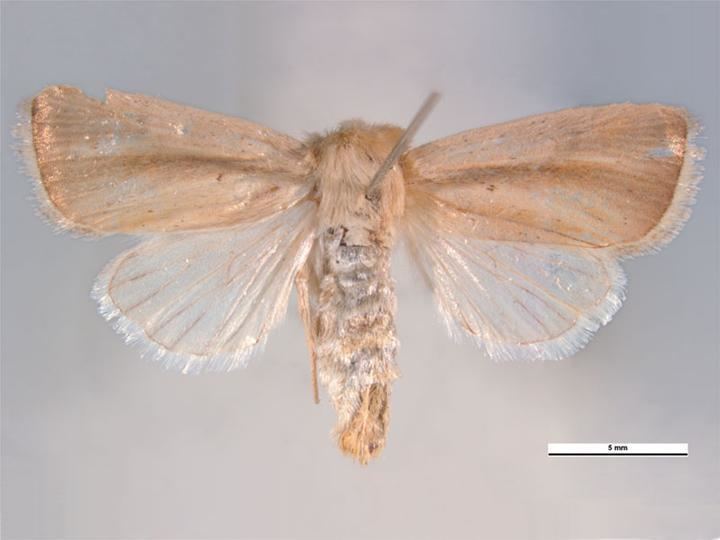 | ||
Similar Sesamia, Chilo suppressalis, Scirpophaga innotata, Scirpophaga, Scirpophaga incertulas | ||
The Asiatic pink stem borer, (Sesamia inferens), also known by names such as Gramineous stem borer, Pink borer, Pink rice borer, Pink rice stem borer, Pink stem borer, Pink stem borer, Purple borer, Purple stem borer or Purplish stem borer, is a moth of the Noctuidae family. It is found from Pakistan, India, Sri Lanka, Myanmar to Japan and the Solomon Islands. A polyphagous species, it is a major pest in many worldwide crops.
Contents
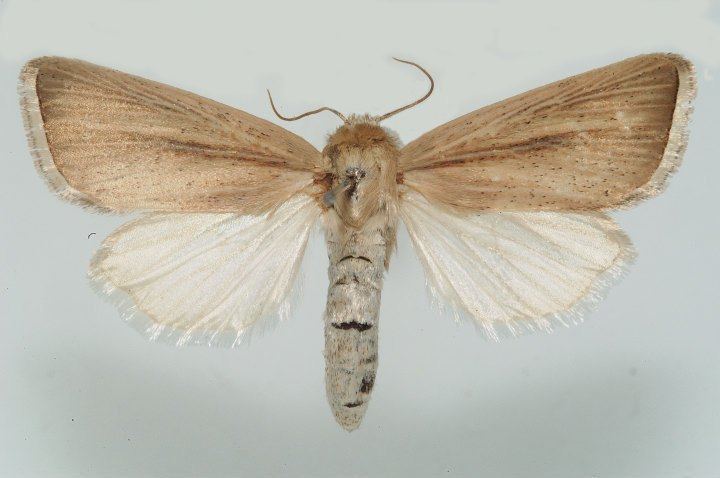
Description
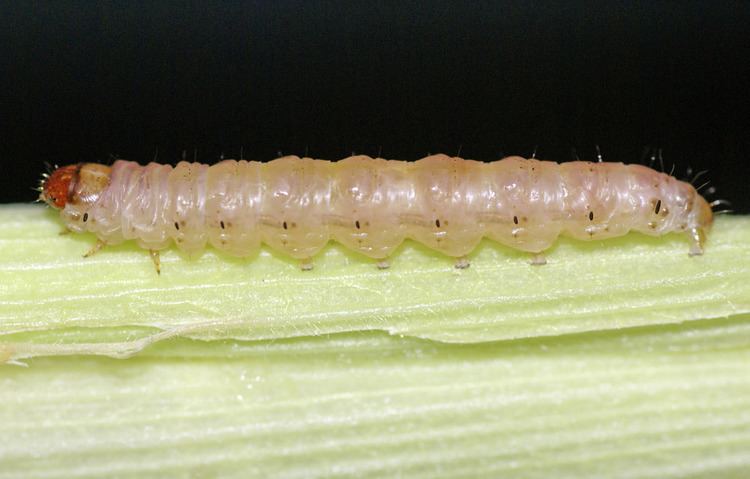
Wingspan is about 28mm. Hind wings with veins 3 and 4 from arise from the cell. Antennae of male ciliated and simple in female. Body ochreous in color. Fore wings with a red-brown suffusion along median nervure and veins 2 to 5. A sub-marginal dark line present. Cilia paler in color. Hind wings are whitish.
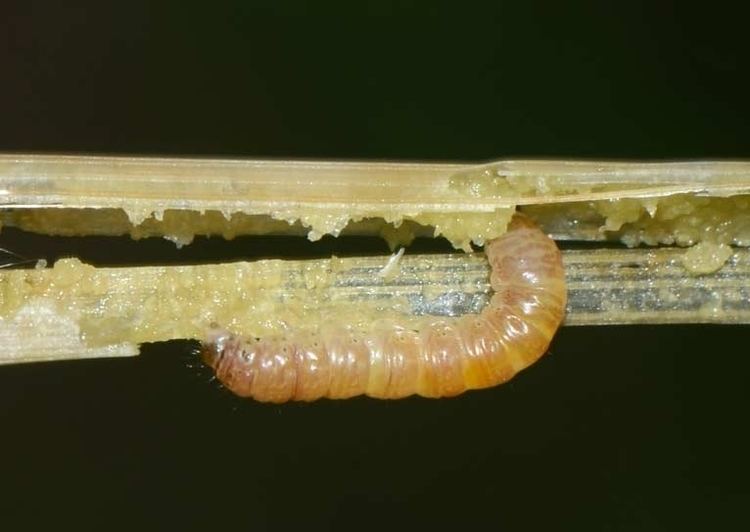
Larva smooth and shiny and lack obvious hairs or markings. Color variable but usually creamy-white with a distinctive pink suffusion. The head and prothoracic shield are brown. The dorsal part of the last abdominal segment bearing the anus is yellowish-brown. Mature larvae are between 30-40 mm long, pink with buff and pink dorsal markings and a brown head. Pupae are up to about 18 mm long, brown to yellowish-brown with a wrinkled frontal region of the head and cremaster with four large and two small spines.
Ecology

The larvae mostly feed on Gramineae species, including Coix, Echinochloa, Oryza, Panicum, Saccharum, Setaria, Triticum, Zea and Zizania. Many of the food plants are of economic importance.
Symptoms
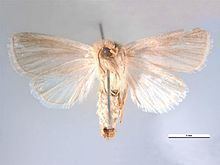
Caterpillars mainly bore into rice stem or base of the panicle. After infection, stem becomes wilt causing deadheart. Panicle attack leads to panicle to be cut leading to state called whitehead. Symptoms are mostly similar to other stem borers and hence closer look required to control the attack.
Control

Mechanical controlling using hand picking and pheromone traps are used. Cultural practices like crop rotation mechanisms, reducing water levels are also used in controlling. Natural enemies such as parasitoides are very effective and nature loving controlling measures. Techinid fly Sturmiopsis inferens also once used, but now non-effective due to their low abundance. In chemical control, BHC, DDT, fenthion, fenitrothion, quinalphos, phosphamidon sprays and granules of lindane are used. Eggs can eliminate by introducing Trichogramma minutum and Telenomeus species. Apanteles flavipes, Bracon chinensis and Sturmiopsis inferens are effective against caterpillars, whereas Xanthopinpla species and Tetrastichus aygari are used in pupal stages.
